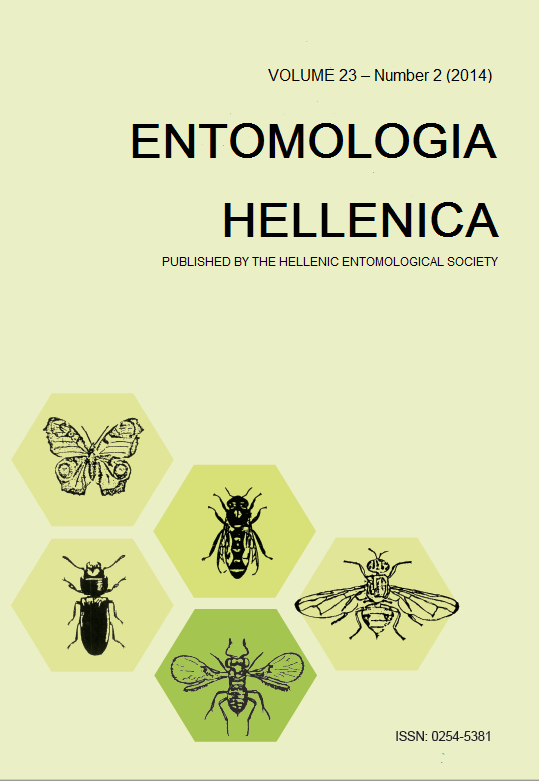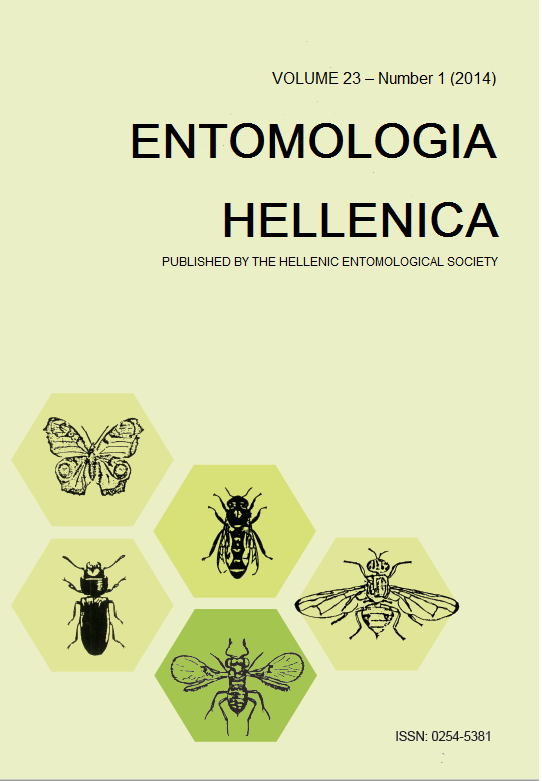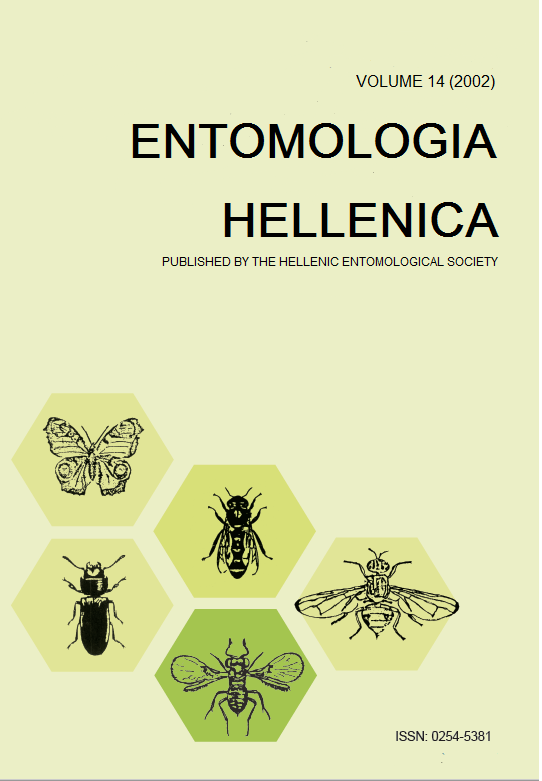Comparison of two types of pheromone traps for the capture of the red palm weevil (Rhynchophorus ferrugineus)

Abstract
This work presents the results of the comparison of two pheromone traps for the capture of the red palm weevil. Trap A was a yellow funnel trap with green top, while trap B was a yellow pitfall trap, both equipped with pheromone. The experiment took place at Sissi and Milatos villages of Lasithi prefecture, mid-North coastline of Crete, from March 2009 to February 2010. The total number of traps deployed at each sampling varied between 24 and 36 due to various disturbances (trap loss, dirt in traps etc.). In each location, always both trap types were present. A total of 3139 adults of red palm weevil were captured during the trials. Temporal variability shows similar pattern for both trap types, as well as for both sexes. Type A traps captured 1376 insects with a ratio of 1♂ to 3.40♀, while type “B” captured 1763 insects with a ratio of 1♂ to 3.15♀. ANOVA revealed significant differences between the two traps in the number of catches (Trap A: 38.22 insects per fortnight /trap, Traps B: 48.97 insects per fortnight /trap). Comparing females and males of both trap types as separate groups, the statistical significance is more profound. At Sissi on average 1.61 males and 5.32 females were captured per fortnight/trap, with an average male to female ratio of 1:3.30, being 1♂: 3.85♀ for type A traps and 1♂: 2.94♀ for type B traps. At Milatos 1.33 males and 4.04 females per trap were recorded and the male to female ratio was 1:3.04, this ratio being 1♂:2.36♀ and 1♂:3.86♀ for type A and B traps respectively. Impressively high captures (more than 150 up to almost 250 in traps of B type and from almost 150 up to more than 350 in traps of A type) were observed from September 2009 to January 2010 with a peak of 356 and 240 on January the 15th for both A and B type traps.
Article Details
- How to Cite
-
Aggelakopoulos, K., Alissandrakis, E., Kollaros, D., & Liantraki, Z. (2014). Comparison of two types of pheromone traps for the capture of the red palm weevil (Rhynchophorus ferrugineus). ENTOMOLOGIA HELLENICA, 23(2), 45–51. https://doi.org/10.12681/eh.11535
- Issue
- Vol. 23 No. 2 (2014)
- Section
- Articles

This work is licensed under a Creative Commons Attribution-NonCommercial-ShareAlike 4.0 International License.
Authors who publish with this journal agree to the following terms:
Authors retain copyright and grant the journal right of first publication with the work simultaneously licensed under a Creative Commons 4.0 license.
Authors are able to enter into separate, additional contractual arrangements for the non-exclusive distribution of the journal's published version of the work (e.g. post it to an institutional repository or publish it in a book), with an acknowledgement of its initial publication in this journal. Authors are permitted and encouraged to post their work online (preferably in institutional repositories or on their website) prior to and during the submission process, as it can lead to productive exchanges, as well as earlier and greater citation of published work.




